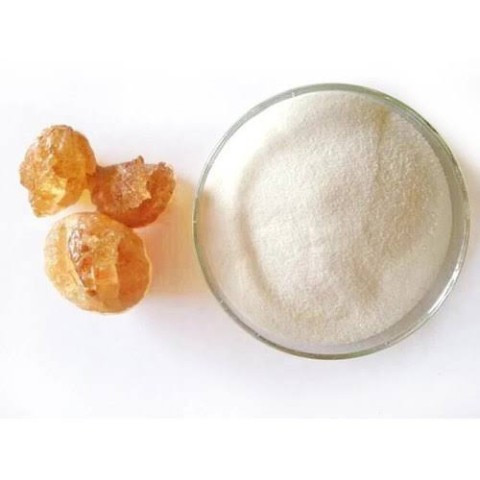

Acacia Gum Arabic 1kg
-
KSh3,500.00
Reviews & Ratings
Acacia Gum Arabic is a natural gum made up of the hardened sap of the acacia tree. The gum is harvested from wild acacia trees across the world but is native to Arabia and West Asia. The Arabic gum is a mixture of polysaccharides, mainly containing arabinose and galactose. It also contains glycoproteins.
The acacia tree is a small tree which grows up to 15 meters in height. The shortest variety of this tree grows to at least 7 meters. It is a low branching tree that is covered in prickles and has semi-thick stem whose diameter is about 1.3 meters. The amount of gum produced by each tree varies with season.
Gum Sudan generally has a rich array of uses; perhaps this is the reason why it is considered a highly lucrative plant. It is used in the making of fuel charcoal and ceramics among other uses which include;
Food: It is considered fit for human consumption and as such used in the food industry as a stabilizer. It is also used as a thickening agent in icings and fillings. It can also be used in the making of soft candy and chewing gum.
Pyrotechnics: the gum is also used in the making of fireworks. It is used as a water-soluble binder in the fireworks making process.
Art and painting: the gum is highly soluble in water and as such is used as a binder in paintings, especially watercolour painting. Water helps in transferring paint to the painting surface and also increases the luminosity of the paint film. The gum also slows down evaporation, thus allowing the painter more working time.
Photography: Acacia gum has been in use for a long time now. In the past, it was used in photography with ammonium and pigment to produce a coloured photographic emulsion.
The acacia trees, which produce the gum arabic, are highly resistant to drought and harsh climatic conditions. They are grown in the arid regions of Kenya and also grow naturally in the semi-arid areas. These trees produce most gum when it’s very dry.
During the dry season between June to October and December to March, these trees are in stress and therefore produce more gum than any other time of the year. Farmers in the areas benefit from selling the gum at this time, perhaps that’s why it is known as the desert gold.
Arabic gum in Kenya is sourced from two main varieties of the acacia tree. These are the acacia Senegal and the acacia seyal. The acacia Senegal produces the best quality gum in the world. About 90% of gum produced in Kenya and the world is from this tree.
Initially, no special processing and storage conditions were observed for this product. With its increased market value, specific processing, storage and packaging conditions have been put in place to make it market-ready. Gum is cleaned post-harvest to remove impurities such as bark and sand. It is then stored in clean containers with proper air circulation. It should also be kept away from heat.
Acacia gum is stored in waterproof paper bags with a polythene lining to prevent it from absorbing water and odour. The bags are then labelled with the country of origin, weight of product and manufacture and expiry dates.
Frequently Bought Products
Product Queries (0)
Login or Registerto submit your questions to seller
Other Questions
No none asked to seller yet
-
KSh3,500.00
Mybigorder - Online Shopping and Ecommerce Marketplace in Kenya
Welcome to Mybigorder
Mybigorder is Kenya's Top, Leading Online Shopping site and an Ecommerce store.
We offer convenience by providing a one-stop solution for all your needs as an individual shopper, a seller, a corporate buyer, or a person engaged in wholesale purchasing. Discover a diverse range of products from our trusted sellers and suppliers, ensuring quality and authenticity in every purchase. With our user-friendly platform, you can explore, compare, and buy with ease, making online shopping a breeze.
Sellers leverage Mybigorder platform to showcase their products and reach a wider audience.
The platform: Mybigorder platform caters to a diverse audience, offering seamless solutions for online selling, shopping, and buying. Explore a world of possibilities with our user-friendly interface, designed to make your online selling and shopping journey enjoyable and effortless.
Corporate Buyers/Office Shopping: Mybigorder offers tailored solutions to streamline your procurement process. Benefit from our corporate shopping services that simplify bulk orders and ensure timely delivery, meeting your business needs efficiently. Request for quote at info@mybigorder.com
Wholesale Buyers: You can take advantage of our extensive network of suppliers, accessing a wide range of products at competitive prices. Mybigorder's commitment to quality and variety makes us the ideal choice for wholesalers looking to expand their inventory.
Mybigorder is not just a marketplace; it's a collaborative ecosystem. We've forged strong partnerships with suppliers to bring you the best prices in the market. Additionally, our affiliate marketing program opens doors for entrepreneurs and influencers to join hands with us in creating a thriving community.


